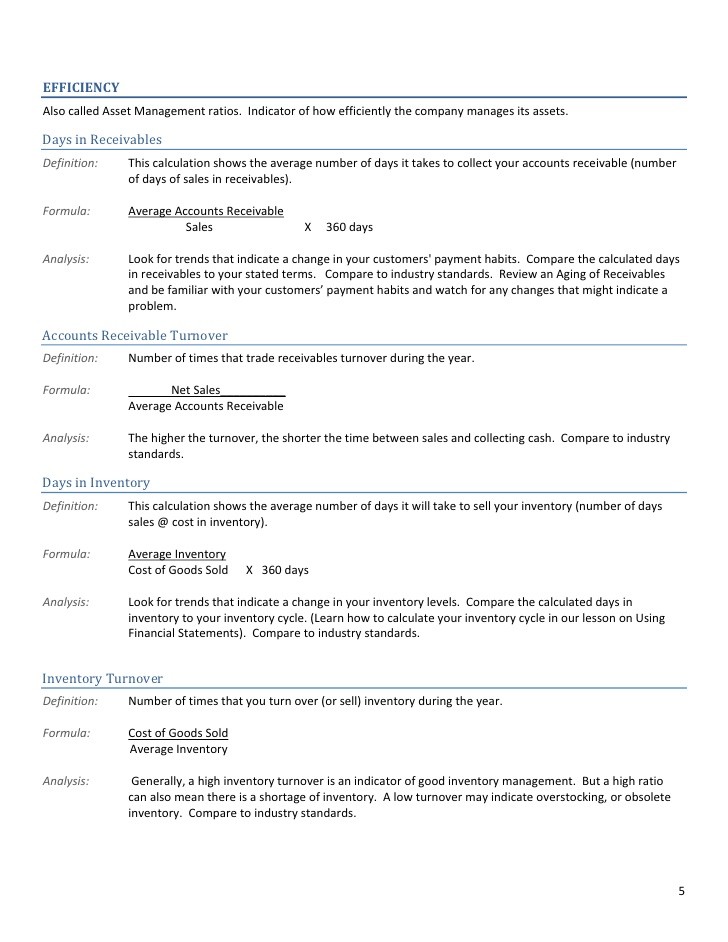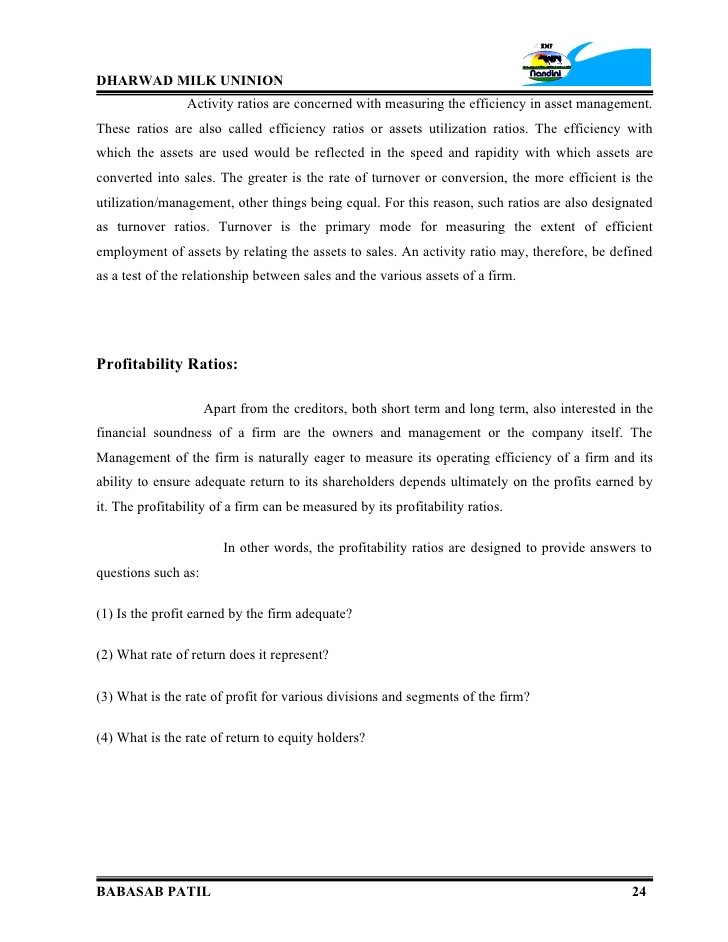Asset Management Ratios Efficiency
Post on: 16 Март, 2015 No Comment

Turnover Ratios Analyze the Firm’s Efficiency in Generating Sales
You can opt-out at any time.
Asset management ratios are the key to analyzing how effectively and efficiency your small business is managing its assets to produce sales. Asset management ratios are also called turnover ratios or efficiency ratios. If you have too much invested in your company’s assets, your operating capital will be too high. If you don’t have enough invested in assets, you will lose sales and that will hurt your profitability. free cash flow. and stock price .
You, as the owner of your business, have the task of determining the right amount to invest in each of your asset accounts. You do that by comparing your firm to other companies in your industry and see how much they have invested in asset accounts. You also keep track of how much you have invested in your asset accounts from year to year and see what works.
Inventory Turnover Ratio
The inventory turnover ratio is one of the most important asset management or turnover ratios. If your firm sales physical products, it is the most important ratio. Inventory turnover is calculated as follows:
Inventory turnover ratio = Net sales/Inventory = ____X
This means that you divide net sales, from the income statement, from the inventory figure on the balance sheet and you get a number that is a number of times. That number signifies the number of times inventory is sold and restocked each year. If the number is high, you may be in danger of stockouts. If it is low, watch out for obsolete inventory.
Days’ Sales in Inventory
The Days’ Sales in Inventory ratio tells the business owner how many days, on average, it takes to sell inventory. The usual rule is that the lower the DSI is, the better, since it is better to have inventory sell quickly than to have it sit on your shelves.
If you know your company’s inventory turnover ratio, you can quickly calculate the Days’ Sales in Inventory ratio. This quick formula for calculating this ratio is the following:
Days’ Sales in Inventory = 365 days/Inventory turnover = ____ Days
If you don’t have the inventory turnover ratio, there is another formula you can use to calculate Days’ Sales in Inventory:
Days’ Sales in Inventory = Inventory/Cost of Goods Sold X 365 = _____ Days
The value of your inventory will come from your latest balance sheet. The cost of goods sold is taken from the income statement. This ratio measures the company’s financial performance for both the owners and the managers as it pertains to the turnover of inventory. Inventory turnover varies from industry to industry. Generally, a lower number of days’ sales in inventory is better than a higher number of days. It will vary from industry to industry.
Average Collection Period
Average collection period is also called Days’ Sales Outstanding or Days’ Sales in Receivables. It measures the number of days it takes a company to collect its credit accounts from its customers. A lower number of days is better because this means that the company gets its money more quickly. Average collection period varies from industry to industry, however. It is important that a company compare its average collection period to other firms in its industry.
365 days/Sales/Accounts Receivable = _____ Days
The sales figure comes from the income statement and the accounts receivable comes from the balance sheet.
Receivables Turnover
Receivables turnover is a ratio that works hand in hand with average collection period to give the business owner a complete picture of the state of the accounts receivable. Receivables turnover looks at how fast we collect on our sales or, on average, how many times each year we clean up or totally collect our accounts receivable. The calculation is as follows:
Receivables Turnover = Sales/Accounts Receivable = ____ times

Generally, the higher the receivables turnover, the better as it means you are collecting your credit accounts on a timely basis. If your receivables turnover is low, you need to take a look at your credit and collections policy and be sure they are on target.
Fixed Asset Turnover
The fixed asset turnover ratio looks at how efficiently the company uses its fixed assets. like plant and equipment, to generate sales. If you can’t use your fixed assets to generate sales, you are losing money because you have those fixed assets. Property, plant, and equipment are expensive to buy and maintain. In order to be effective and efficient, those assets must be used as well as possible to generate sales. The fixed asset turnover ratio is an important asset management ratio because it helps the business owner measure the efficiency of the firm’s plant and equipment.
Here is the calculation for fixed asset turnover:
Fixed Asset Turnover = Sales/Net Fixed Assets = _____ times
Usually, the higher the number of times, the better. However, if the ratio is too high, your equipment is probably breaking down because you are operating over capacity. If the number of times is too low as compared to the industry or to previous years of firm data, then your firm is not operating up to capacity and your plant and equipment is likely sitting idle.
Net Working Capital Turnover
The net working capital turnover ratio is an asset management ratio that is a big picture ratio. It measures how hard our working capital is working for the firm. Working capital is what you have left over after the company pays its short-term debt obligations. Generally, the higher the value of the ratio, the better. The calculation is as follows:
Total Asset Turnover
The total asset turnover ratio is the asset management ratio that is the summary ratio for all the other asset management ratios covered in this article. If there is a problem with inventory, receivables, working capital. or fixed assets, it will show up in the total asset turnover ratio. The total asset turnover ratio shows how efficiently your assets, in total, generate sales. The higher the total asset turnover ratio, the better and the more efficiently you use your asset base to generate your sales. Here is the calculation:
When you analyze your asset management ratios, you can look at your total asset turnover ratio and if there is a problem, you can go back to your other asset management ratios and isolate the problem. Knowing your position regarding the efficiency of using assets to make sales is crucial to the success of your firm.














